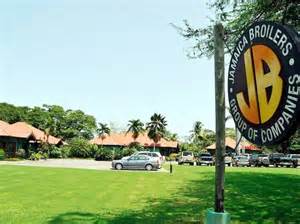Reserves and Exchange Rates
Very preliminary Balance of Payments (BOP), data generally reflected developments in the key export sectors, the reduction in international commodity prices and the pick-up in global financial markets. The strengthening of economic activity in most BMCs translated into higher import demand, the effect of which was in some cases offset by reduced import prices.
Lower commodity exports and higher travel receipts were generally reflected in merchandise and services trade balances, while the income accounts of some BMCs showed reductions in interest payments related to debt restructuring. Remittances inflows were estimated to have increased in the majority of BMCs, but remained flat in a few. On the capital and financial account, most BMCs benefited from increases in FDI, particularly for tourism related construction, as well as higher inflows of official borrowings, although there were key exceptions.
Outturns in relation to foreign exchange reserves varied in line with BOP performances, but import cover generally remained within accepted norms.
Foreign exchange reserves increased in the ECCU, Belize and Trinidad and Tobago, and fell in the Bahamas, Barbados, Guyana, Haiti, Jamaica and Suriname. Most BMCs continued to hold reserves in excess of the international 3-month/12-week benchmark. With regard to BMCs operating flexible exchange rates, the Trinidad and Tobago dollar and the Guyana dollar remained relatively stable (depreciating by under 1%), while the Haitian gourde and Jamaica dollar depreciated more sharply. During the year, the Jamaica dollar depreciated by 14.6%, as compared with a 6.8% depreciation in the previous year, reflecting increased foreign-currency demand. The Haitian gourde depreciated by about 3.4%, as official transfers and financial inflows related to post-earthquake recovery and reconstruction tapered off.
Monetary Developments and Financial Stability
Monetary developments in the region continued to be characterised for the most part by weak credit and high levels of liquidity, notwithstanding the generally accommodative monetary policy stances maintained by Central Banks. Haiti and Suriname were key exceptions, with credit growing at a brisk pace. Given concerns about increasing risks to macroeconomic stability from the rapid acceleration in credit growth, the Central Bank of Suriname tightened its monetary policy settings. The Central Bank of Haiti effected its tightening of monetary policy settings in response to the depreciation of the gourde, doing so by raising the Bank’s reserve requirement ratios rather than increasing policy rates, as it sought to still support credit growth to stimulate economic activity. Domestic credit also expanded in Guyana, but monetary policy became more accommodative toward the end of the year amid signs that inflation and low exchange rate volatility, the monetary authorities maintained the repo rate at an accommodative level in Trinidad and Tobago, aimed at boosting credit in order to support growth in economic activity.
At the same time, however, the Central Bank of Trinidad and Tobago took steps to absorb some of the prevailing excess liquidity through its open market operations.
Regional financial systems generally reported soundness and stability indicators within prudential guidelines, apart from the ECCU indigenous banking sector, which continued to face critical challenges. Non-performing loans (NPLs) remained high in several BMCs, but most institutions appeared to be adequately capitalized and other financial soundness indicators remained within prudential guidelines. ECCB took control of the operations of two indigenous commercial banks in Anguilla in August 2013, in order to maintain stability in the regional financial system, and a resolution strategy is under preparation. Meanwhile, the resolution strategy for Antigua and Barbuda Investment Bank (ABIB), which was taken over by ECCB in July 2011, remains under implementation.
Fiscal Performance and Debt
Fiscal performance deteriorated in 6 of the 9 most highly indebted BMCs, resulting in increased indebtedness, whereas the other 3 saw marked improvements. Revenues shrank in the context of contracting output in Barbados and St. Lucia, the abolition of tourism taxes in Antigua and Barbuda and stagnating grant inflows that offset higher proceeds from the recently extended Economic Citizenship Programme in Dominica. Higher expenditures reflected expanded public sector investment in capital projects in Antigua and Barbuda and St. Vincent and the Grenadines, with the latter also increasing spending to honour wage increases. In addition, there was off-budget expenditure in St. Vincent and the Grenadines for the construction of a new airport. Consequently, notwithstanding cutbacks in capital spending in Barbados, Dominica, Grenada and St. Lucia, or Antigua and Barbuda’s successful completion of an IMF programme in June 2013, debt ratios rose in all 6 BMCs.
Preliminary estimates indicate that Barbados had the most notable debt accumulation (approximately 10 percentage-points (pp) increase in the debt ratio to 108% of GDP), followed by Grenada and Antigua and Barbuda (6 pp each to 116% and 95%, respectively), St. Vincent and the Grenadines (3 pp to 73%), Dominica (2.8pp to 72.5%) and St. Lucia (1.5pp to 73.6%). In Barbados, Grenada, St. Lucia and St. Vincent and the Grenadines, the run-up in debt was reflected in credit rating downgrades.
On the other hand, successful debt restructuring in Belize, Jamaica and St. Kitts and Nevis, as well as satisfactory progress on IMF-sponsored adjustment programmes by Jamaica and St. Kitts and Nevis, underpinned improved debt dynamics and prompted credit rating upgrades for Belize and Jamaica. In the fiscal year ended March 2013, Belize’s fiscal performance was marked by a narrowing of the primary surplus but an improvement in the overall balance, as reduced interest expenditure related to the restructuring of the external debt in March 2013 led to a decline in overall expenditure. There were, however, some subsequent slippages relative to budgeted outturns, due to unanticipated outlays for reconstruction and rehabilitation works following excess rainfall in the second half of 2013, which partially reversed the improvement in the debt ratio.
Jamaica has met fiscal targets for the primary and overall balances and tax revenues under an Extended Fund Facility (EFF) arrangement initiated with the IMF in 2013. Notably, the completion of a (second) debt exchange in February 2013 as a prior action under the EFF has contributed to this improved performance by lowering interest payments significantly.
The St. Kitts and Nevis government’s strong fiscal performance in 2012 carried over into 2013, with recurrent revenue increasing (largely driven by receipts under the Citizenship by Investment Programme), while recurrent expenditure fell, mainly because of lower interest payments relating to the ongoing restructuring of the public sector debt. Consequently, the St. Kitts and Nevis government reported recurrent and overall surpluses and continued to meet targets under its three-year SBA with the IMF. Significant progress was made on debt restructuring, as a result of which the debt ratio has fallen to approximately 99.7% of GDP at end of 2013, as against approximately 146.5% in June 2011, when the government had first approached creditors about restructuring.
Among the ten BMCs with debt ratios below the international benchmark of 60%, fiscal performances were mixed. The five UK Overseas Territories (OTs) all saw improvement in public finances in 2013. Debt ratios among the OTs remained relatively low (under 40% of GDP). However, all remained either in breach of borrowing guidelines (and therefore required UK approval for new borrowing) or dependent on UK budgetary support.
Anguilla, BVI and Cayman Islands all recently agreed on new borrowing guidelines with the UK government. Despite improved fiscal performances in 2013, characterised by careful control of expenditures in order to build up operating reserves and facilitate reduction of outstanding debt, all three remained in breach of the new guidelines and would therefore require UK approval for any new borrowing.
The other two OTs, Montserrat and Turks and Caicos Islands, remained heavily dependent on UK budgetary support. Montserrat recorded a smaller deficit despite a decline in current revenue and large increases in both recurrent and capital expenditure. This improvement was driven by a significant rise in budget support to finance the increased spending, which largely reflected settlement of arrears and a major geothermal exploration project. There was also a marked improvement in Turks and Caicos Islands’ public finances in 2013, as revenues were boosted by budget support and proceeds from the sale of various assets, while recurrent spending decreased on account of a right-sizing programme and other fiscal consolidation measures, within the context of a recently formulated fiscal strategy.
Despite also maintaining relatively low debt ratios, most other BMCs nevertheless recorded significant increases in debt, as public finances came under pressure. In The Bahamas, Haiti, Suriname and Trinidad and Tobago, financial pressures generally reflected increased capital spending and declining revenues, as well as wage settlements in Suriname and Trinidad and Tobago. For The Bahamas, both Moody’s and Standard and Poor’s affirmed their ratings of Baa1 and BBB with negative outlooks correspondingly. Conversely, despite the weakening fiscal position, Suriname’s general fiscal prudence earned it rating upgrades in 2013 by credit rating agencies.
It is noteworthy in this regard that the Surinamese government is at the legislative stage of setting up a Sovereign Wealth Fund as a repository of windfall mineral revenues to minimize revenue-driven macroeconomic volatility. Moreover, the debt to GDP ratio, though 15 percentage points above that of 2012, was still relatively low, estimated at 37.1% at the end of 2013.
In Trinidad and Tobago, while the debt stock increased in absolute terms as a result of the fiscal deterioration, relatively higher nominal GDP growth resulted in a decrease in the debt to GDP ratio.
Guyana was a key exception to the trend within this group of BMCs. The overall deficit narrowed, coming in below the budget target, as the expansion in economic activity was reflected in increased revenues, while debt relief, debt compensation arrangements and loan repayments led to a reduction in the debt stock.
(Source CDB Annual Report 2013 – Volume One Our Caribbean Economies And Global Context)

 Businessuite Markets3 weeks ago
Businessuite Markets3 weeks ago
 Businessuite News241 week ago
Businessuite News241 week ago
 Leadership Conversations4 weeks ago
Leadership Conversations4 weeks ago
 Corporate Feature1 week ago
Corporate Feature1 week ago
 Businessuite News242 days ago
Businessuite News242 days ago
 Businessuite Women2 weeks ago
Businessuite Women2 weeks ago
 Businessuite News24 International1 week ago
Businessuite News24 International1 week ago
 Business Insights3 weeks ago
Business Insights3 weeks ago







